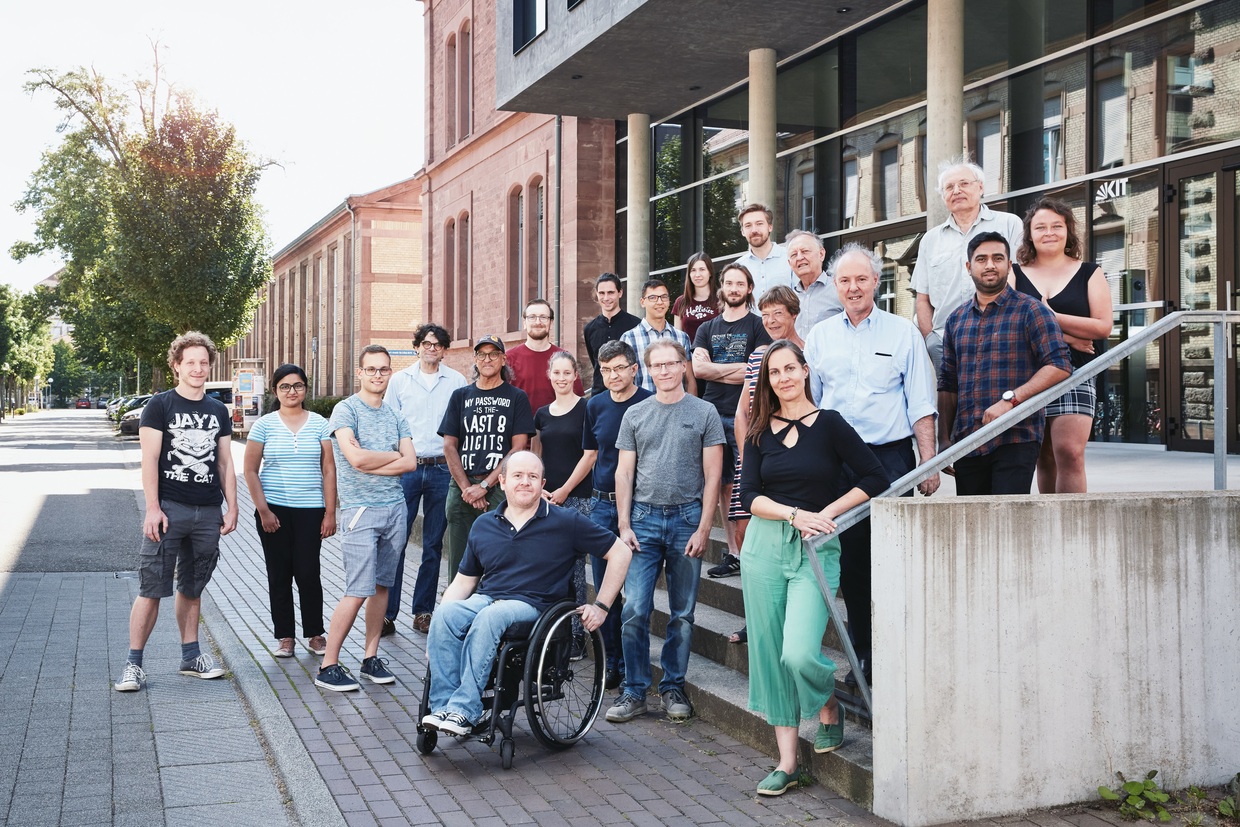Carbon Nanotubes (CNTs)
Novel electrooptic devices
Ion beam and Mass Spectrometric Methods
"static" and "dynamic" properties of monodispersed atomic and molecular clusters
Welcome to the “Microscopic Systems” Division of the Institute of Physical Chemistry

One aspect of our work comprises measurements of the "static" and "dynamic" properties of monodispersed atomic and molecular clusters. For example, we probe the electronic and geometric structures of size-selected atomic clusters containing from 3 up to several hundred atoms under isolated conditions in ultrahigh vacuum. We study both bare clusters (e.g., Ru55-) and clusters after their chemical derivatization (e.g., Ru55H80-). Additionally, we deposit such species onto well-defined surfaces (and into cryogenic inert gas matrices) using low energy ion beam methods in order to study their changed structure, thermal properties and chemical reactivity. A recent thrust of our research in this area has been the generation and characterization of novel cluster assembled materials based on all-carbon building blocks.
Typically our work makes use of ion beam and mass spectrometric methods – a good part of which we develop ourselves. Over the years this has allowed us to set up several unique instrumentation platforms. This has been paralleled by research into the dependence of molecular properties on overall charge. In this context, we are particularly interested in how the characteristic properties of multiply negatively charged molecules depend on electron localization. For example, we are presently studying tunneling autodetachment from electronically excited states of inorganic and metal-organic chromophore multianions using time- and angle resolved photoelectron spectroscopy. We also study how the optical properties of molecular ions change with environment by performing measurements under isolated, gas-phase conditions (using a variety of laser spectroscopic methods such as photodissociation and trapped ion laser induced fluorescence) and comparing these data to condensed phase measurements and predictions from theoretical spectroscopy.
Depending on their vibrational temperature, large molecular ions can have non-interconverting isomers/conformers with distinct electronic properties. To probe such conformer spaces (via meaurements of collision cross sections), we apply high resolution trapped ion mobility spectrometry. To obtain conformer-specific optical properties we also develop and apply hyphenated methods which combine high resolution ion mobility, mass spectrometry and laser spectroscopy.
Beyond surface-bound clusters, cluster assembled materials and other novel materials made by mass-selected low-energy ion beam deposition, we have a long-standing interest in molecularly-defined sp2-carbon nanomaterials based in particular on single-walled carbon nanotubes (SWNTs). For example, we are presently involved in large scale preparation and fractionation of single-walled carbon nanotubes (SWNTs) according to structural type and length. Furthermore, we study optical (and other electronic) properties, both of purified SWNT materials as well as of individual carbon nanotubes – subject to external physical and chemical perturbations (e.g. gas adsorption or oxidation). For this we develop the appropriate spectro(micro)scopic infrastructure as necessary. In collaboration with physicists and materials scientists, we develop novel electrooptic devices based on individual semiconducting SWNTs.
